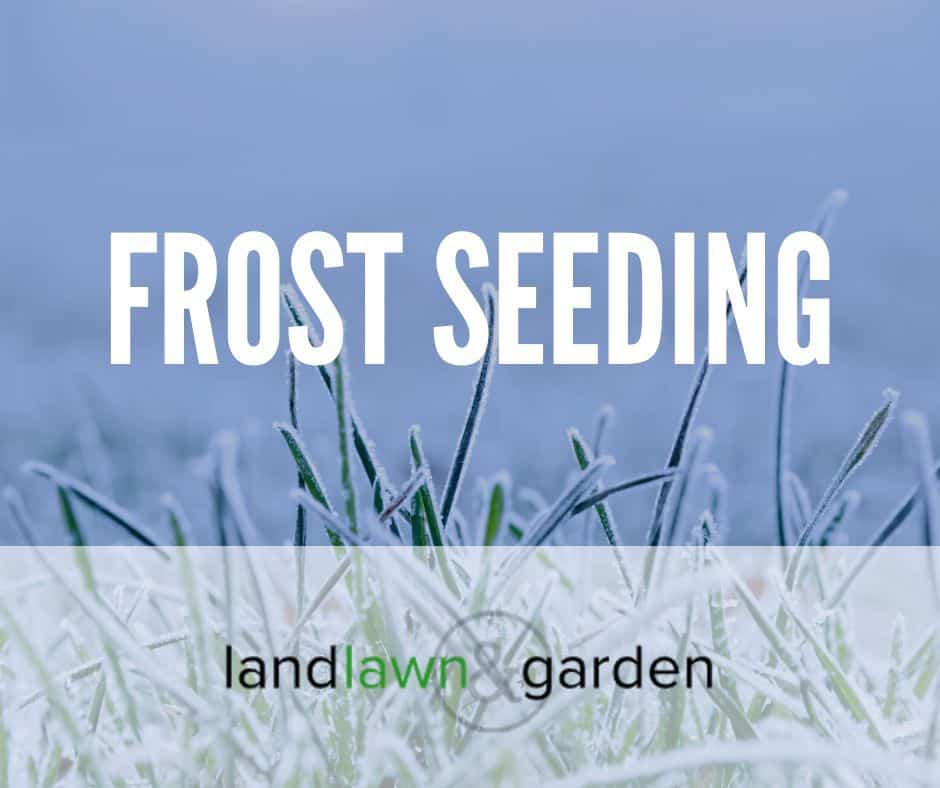Conventionally, the soil is tilled before seeds are planted to prepare the soil and ensure good contact between the seeds and the soil. This helps the seeds germinate evenly. In parts of the world where the ground freezes over winter, there is a no-till method of seeding food plots that harnesses the natural action of frost heaving.
Frost seeding food plots is done in late winter and early spring. Cool-season perennial seeds are spread onto frozen ground, ideally onto a thin layer of snow. The freeze-thaw causes the soil to expand and contract, embedding the seeds in the soil. As temperatures rise, the seeds germinate.
Frost seeding small food plots is key to guarantee a good hunting season. Frost seeding is an inexpensive way to start and maintain food plots for deer and other wildlife. Keep reading to learn the benefits of frost seeding and how easy it is to do.
Quick Links
What is Frost Seeding?

It refers to sowing seed onto frozen ground that is still covered in a few inches of snow in late winter or early spring. Frost seeding relies on a natural process known as frost heaving when soil freezes and thaws.
As the ground freezes during the day, water in the soil expands, breaking the soil particles apart and pushing them upward. During the day, the ground thaws and this action “pulls” the seeds into the soil.
Frost seeding is a low-cost method that uses minimal equipment to start and maintain food plots for deer and other wildlife species.
Best Seeds to Use for Frost Seeding
The best seeds to use for frost seeding are hard-shelled seeds. Soft-shelled seeds like corn or soybeans will rot long before they germinate. Cool-season perennials are best as they will germinate in early spring and are lush forage by midsummer.
Generally, legumes are favorable as they are high in protein and therefore make nutritious forage.
The following perennial species are popular for frost seeding long-term food plots:
- Red and white clover
- Durana clover
- Kura clover
- Ladino clover
- Brassicas
- Alfalfa
- Trefoil
- Chicory
In short-term food plots, the following annual species are popular for frost seeding:
- Oats
- Rye
- Wheat
The disadvantage of the annual seeds is that they are larger in size, so they are more likely to be eaten by grouse, wild turkey, quail, crows, and other wild birds before they germinate.
The Benefits of Frost Seeding Food Plots
There are so many advantages to frost seeding food plots!
- Frost seeding is a method of seeding that does not require tilling the soil. This is highly beneficial for soil microbes.
- Legumes add nitrogen to the soil, improving grass growth.
- It is a cheap way of introducing desirable forage species into food plots.
- Suppresses unwanted weeds.
- It reduces the cost of starting a food plot by 70 to 75%!
- Inexpensive because it requires minimal equipment. You only need a shoulder spreader. This saves fuel and equipment costs.
- Frost seeding creates amazing looking food plots for the summer.
- Lush, frost-seeded food plots provide nutritious grazing for deer.
- Frost-seeding food plots ensures a good hunting season.
When and How to Frost seed

The optimal time to frost seed is in late winter or early fall. When you frost seed is entirely dependent on where you live.
You want to frost seed during the last few freezing weeks in the season when the daytime temperatures are nice and warm but dip below zero at night. Check out historical climate records for your area to get an idea of when this is.
One should frost seed early in the morning or in the evening while the ground is still frozen hard. Avoid walking through muddy plots.
When choosing sites to frost-seed small food plots, look for areas with lots of bare soil. Good contact between the seeds and soil will ensure good germination.
Equipment you need:
- Shoulder spreader.
- Seed mixture.
Wearing the shoulder spreader full of seeds, walk the entire extent of the food clock in a clockwise direction, moving from the outside towards the inside, broadcasting the seed at the recommended rate (usually 2 to 4 pounds per acre).
Next, walk the entire area again, diagonally. To finish off, broadcast extra seed onto visibly bare patches.
If the food plot you want to frost seed is very large, you can use an ATV or tractor-driven broadcast seeder.
After you have frost seeded a food plot, you should maintain the area to give the seeds the best possible chance of germinating. Remove weeds that compete with the seeds you have sown.
When the vegetation has grown to a height of 6 to 8 inches, it is time to mow the food plot or graze it. This will enable more light to reach the young seedlings and help them grow faster.
Be careful of mowing it too short or overgrazing the food plot, as this will cause the young seedlings to be eaten before they have established properly.
Tips for Frost Seeding Food Plots
Here is some frost-seeding advice from seasoned hunters and habitat management specialists:
- Plant a diverse blend of different species. Monotypic food plots are not as productive as polytypic plots. Plus, if you only plant one type of seed, there is a greater risk of the food plot failing.
- Buy high-quality, forage-grade seed blends rather than cheaper agricultural-grade seeds. The latter is intended for livestock consumption, and deer do not find it as palatable.
- Before frost-seeding a new food plot, apply a selective or non-selective herbicide to clear existing vegetation. This will hugely improve the germination rate for your food plot.
Wrapping Up
Frost seeding food plots is an inexpensive way to sow seeds that does not require the soil to be tilled. It relies on the fact that soil freezes at night and thaws during the day in early spring. These freeze-thaw cycles cause frost heave, which draws the seeds into the ground so that they can germinate.
Having lush food plots provides high-quality forage for deer and will ensure that you have a successful hunting season. The environment also benefits because frost seeding legumes feeds the soil by adding nitrogen.
Frost seeding a small food plot is easy to do – all you need is a shoulder spreader to broadcast the seed. Sow seeds in the morning, before the ground has started to thaw.

Kevin is the owner of Land Lawn & Garden. In addition to taking a lot of pride in his lawn at home, he also helps manage the family land. You can find more about him here.

